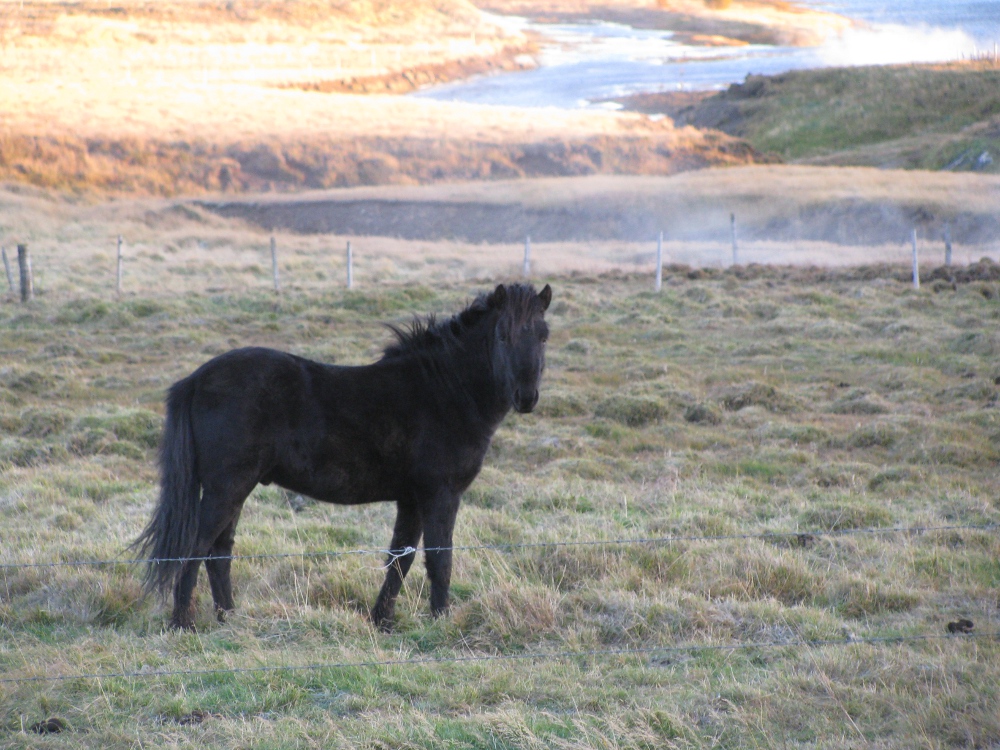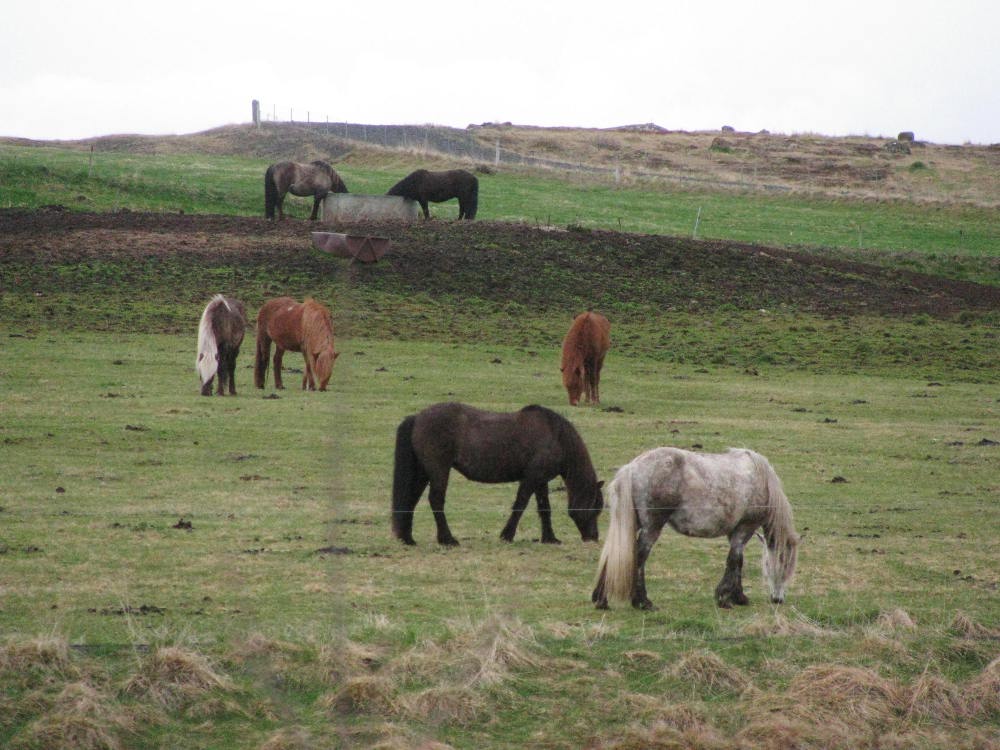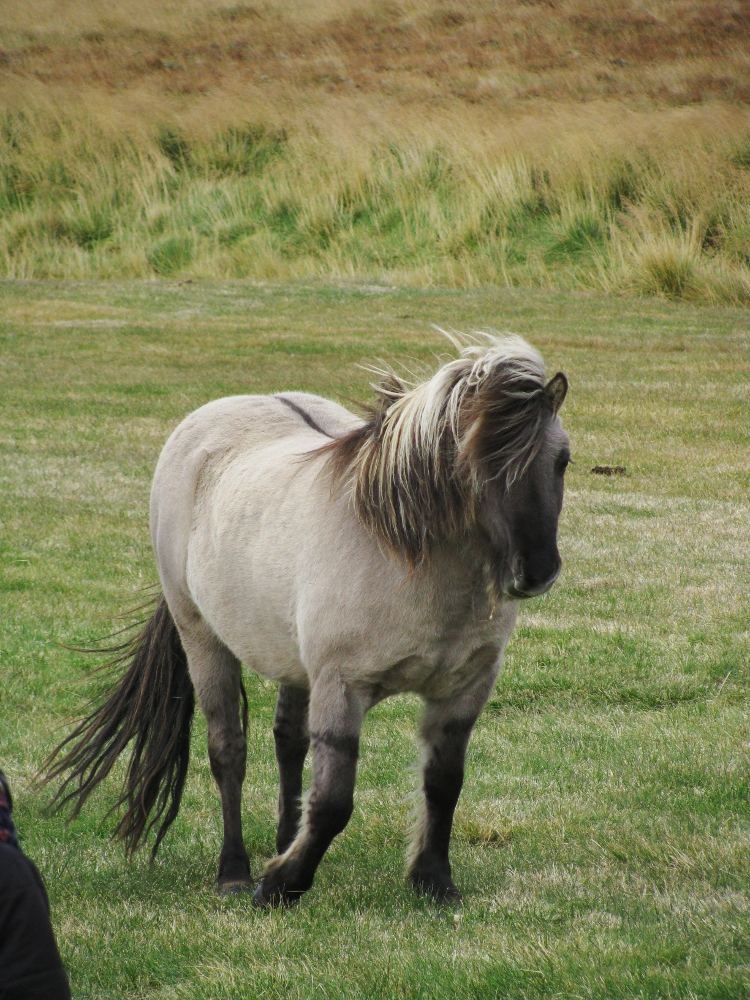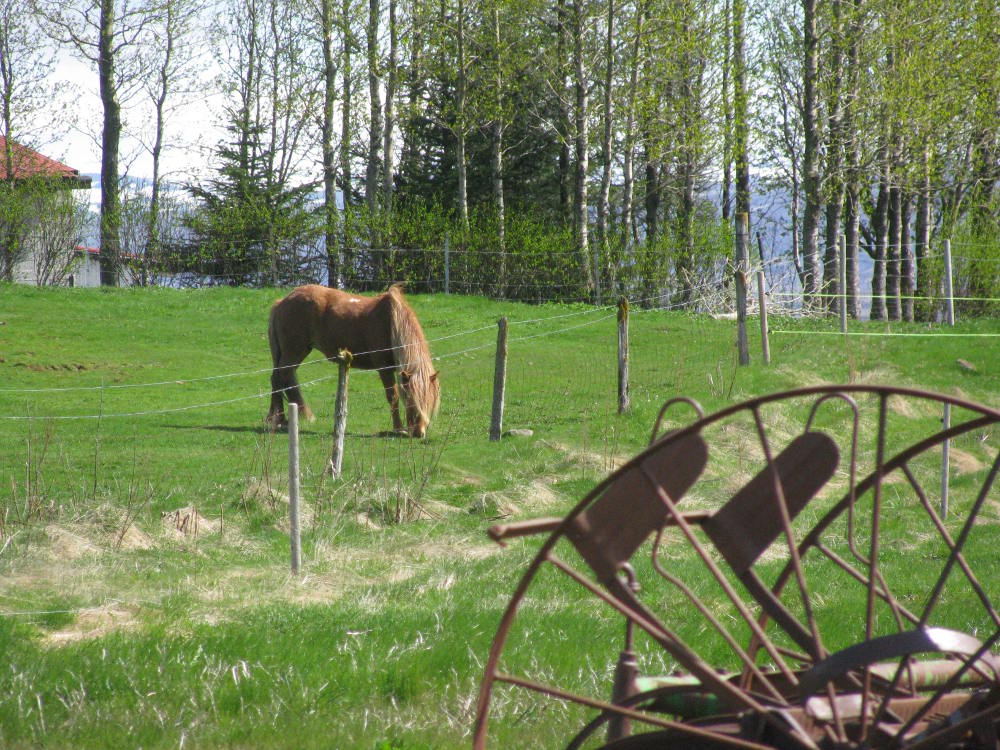Icelandic horses for courses and… courses. Posted by hulda on Jul 17, 2014 in Icelandic culture, Icelandic customs, Icelandic history
Question and answer time! During the last month you’ve asked the Icelandic blog, via both the e-mail and the comments section, a couple of interesting questions that I’ll try to answer today.
First a question was about horses: what are all the different words that mean horse in Icelandic?
The most obvious one is hestur of course, but that’s only the most generic term and it’s not used f.ex. to describe horse meat (comparable to how English uses beef and pork instead of cow and pig).
Hross is another word that can either mean a horse or horse meat. Then there are words that specify something about the animal you’re talking about. Foli is a stud, hryssa and meri both mean a mare. If speaking of a mare it’s a bit more common to use meri than hestur, though both words do work for the same animal. Folald is a foal, hestfolald is a male foal, and a bit confusingly a folaldsmeri is not a female foal but a mare with a foal. Since horses are commonly eaten in Iceland you may well profit from knowing these extra words, all depending on whether or not you personally are willing to eat them. If not, say neigh to hrossakjöt and folaldakjöt!
…I am so sorry about how bad that pun was.
Icelanders and their horses go back such a long time that you’ll find them in the strangest situations. Kinnhestur (lit. transl. cheek horse) means a slap in the face for example, and if you come across sævar hestur (= horse of the sea) in old texts you’re actually reading about a ship.
Second question was about the usage of það as a pro-form.
1. An example of the pro-form usage of það where it substitutes a whole sentence could be f.ex.
“Arna segir að þú hittir Guðrúnu í gær og kallaðir hestinn hennar ljótan.” (= Arna says you met Guðrún yesterday and called her horse ugly.)
“Segir hún það? Í alvöru? Ég sagði ekkert slíkt.” (= She says that? Really? I said nothing of the sort.)
“Já, en hún segir að þú hafir sagt það.” (=Yes, but she says that you have said that.)
As you can see it’s very similar to English and the point is to avoid repeating a whole sentence. Funnily though the Icelandic way of using pro-forms is a bit illogical at times if we take a pro-form to mean substituting something – it can occasionally be simply added to a sentence without it actually standing in for something else.
2. Example of a pro-form used to tandem a subject:
Það er folaldakjöt í ísskapnum. (= There’s foal meat in the fridge, lit. transl. That is foal meat in the fridge.)
Note though that if the word order is reversed það falls out: í ísskápnum er folaldakjöt.
3. Occasionally það also pretends to be a subject though it’s not. This mainly happens when talking about the weather.
Það verður sólskin í dag. (= It’s going to be sunny today.)
Það var rok og rigning allan daginn. (= It was windy and rainy all day long.)
Likewise, if changing the word order you’ll drop the það: allan daginn var rok og rigning.
These are the three most typical examples of the usage of það as a pro-form, there are more cases that are similar but bleed into demonstrative/are demonstrative instead. They might need a whole blog post of their own.
Facts about the Icelandic horse
– Though Icelandic horse is said to have five gaits it’s more correct to say that they have 4-6 depending on the horse. This is because in Iceland canter and gallop are considered to be the same thing, so the first three gaits – fet (= walk), brokk (= trot) and stökk (= canter/gallop) are actually four, and the latter two, tölt (= tölt) and skeið (= pace), don’t appear in every horse. Those that can do all gaits are valued highly, those that cannot… are valued highly too, on the dinner table.
– When Icelanders took Christianity as the main religion it was on condition that they’d still be allowed to eat horse meat.
– In fact there’s even a joke that goes “Hestur, hinn ljúffengi fararskjótur“: Horse, what a delicious vehicle.
– It’s a mystery why only Icelandic horses can tölt, but one theory is that tölting was deliberately bred out of horses in general because it’s not a suitable gait for pulling carts. EDIT: there’s a great comment by Hans regarding this below this post entry – be sure to check it out! Iceland, lacking proper roads for most of its existence, had no use for cart-pulling on the same scale to f.ex. Europe, but it did have many uses for sure-footed horses that had a pleasant and fast gait option.
– Icelandic horses have 40 base colours and hundreds of names for colour combinations. The most common base colours are red and brown. Some colours are favoured whereas others are unwanted, and some breeders even concentrate on breeding their horses to favourable colours.
– No horses are allowed to enter Iceland. If an Icelandic horse is taken out of the country it cannot be brought back.
– Many breeders concentrate on fiery temperament because competitions are serious business over here. As a result the companies that offer tourists riding tours are trying hard to get their hands on the calmer ones because nothing is a worse combination than a feisty Icelandic horse carrying an inexperienced rider on a mountain side!
How to pronounce horse in all its forms.

Build vocabulary, practice pronunciation, and more with Transparent Language Online. Available anytime, anywhere, on any device.
About the Author: hulda
Hi, I'm Hulda, originally Finnish but now living in the suburbs of Reykjavík. I'm here to help you in any way I can if you're considering learning Icelandic. Nice to meet you!








Comments:
Hans:
It was my question about the horse names! Thanks for answering!
About tölt, I would just like to add a few precisions for those interested:
1/ Icelandic horses are actually not the only horses that can tölt or pace. They are however believed to be the only horses where both tölt and pace can be present.
2/ It isn’t so much that tölt was voluntarily “bred out” of horses because it’s not good for cart pulling. It’s rather that:
– Tölt/Pace ability must be seriously bred as the trait (a genetic mutation) can quickly be lost over a few generations
– Horses who trot well generally don’t have the trait (because the gene that causes tölt is actually a mutation that disassembles gaits), although most Icelandic horses move at the trot or canter when not ridden because trot is less effort
– Europe used to have plenty of different types of horses for different uses (much as we have race cars, SUVs, …). As the road network developed, the need for gaited horses became lesser while the need for trotting horses (who can hold a steady pace more easily and for longer durations) developed. Hence horses simply stopped being bred for gaits, which meant a very rapid dilution and disappearance of the trait (since trotters happen more naturally then gaited horses).
hulda:
@Hans Thank you so much, that makes a lot of sense! Iceland lacked a road network up until the arrival of cars and distances here were always somewhat short with areas like Sprengisandur that you had to cross as quickly as possible. This area is a large wasteland with nothing for horses to eat or drink, no shelter for them or their riders and is prone to dangerous storms. The very name comes from the fact that you had to ride as fast as you could: sprengja means to explode, or when used on horses, “to fall down exhausted”.
I once asked how people traveled from place to place or moved house, and the answer was simply that you tied everything on your horses and rode. If the surroundings permitted you could also use a cart but fact remained that there were very few roads back then and that carts slowed you down considerably.